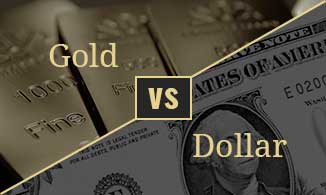
[et_pb_section fb_built=”1″ _builder_version=”3.2″ custom_padding=”6px|0px|24px|0px”][et_pb_row custom_padding=”50px|0px|21.5938px|0px|false|false” custom_margin=”-20px|||” _builder_version=”3.2″ background_size=”initial” background_position=”top_left” background_repeat=”repeat” custom_margin_last_edited=”off|desktop”][et_pb_column type=”4_4″ _builder_version=”3.0.47″ parallax=”off” parallax_method=”on”][et_pb_text _builder_version=”3.1.1″ custom_margin=”-10px|||”]Volatility came roaring back with a vengeance in February, and the first week was characterized by the biggest single-day point loss in stock market history. But the cheerleaders pushed equities back to new highs within days. So we know stocks were dangerous before the wild rides early last month. And they’re even more dangerous now.[/et_pb_text][et_pb_text _builder_version=”3.2″ custom_margin=”|||” custom_padding=”||3px|”]
P/E’s Are Still Historically High…
[/et_pb_text][et_pb_text _builder_version=”3.2″ header_font=”||||||||” header_2_font=”||||||||” custom_margin=”-30px|||” custom_margin_last_edited=”off|desktop”]
The current P/E ratio for the S&P 500 is 25.66 – higher than it’s ever been prior to the disastrous Internet stock bubble of the late 1990s. Furthermore, that earnings figure is likely artificially low, considering most companies have been claiming big profits in fiat money during the Trump stock market boom
[/et_pb_text][et_pb_text _builder_version=”3.2″ custom_margin=”20px||-3px|” custom_margin_last_edited=”on|desktop” custom_padding=”||3px|”]
…Yet Dividends are Still Historically Low
[/et_pb_text][et_pb_text _builder_version=”3.1.1″]
Valuations are absurdly high when you consider that the dividend yield is only 1.78 percent. That’s scraping just above the all-time lows. Equities could support a P/E in the mid-20s when dividends were close to 3 percent, but we haven’t seen 3 percent dividends in 25 years.
[/et_pb_text][et_pb_image src=”https://www.monetarygold.com/wp-content/uploads/2018/03/SP-Dividend-Yield.png” _builder_version=”3.2″ max_width=”77%”][/et_pb_image][et_pb_text _builder_version=”3.2″ custom_margin=”||-3px|” custom_padding=”||3px|”]
Debt is Exploding…
[/et_pb_text][et_pb_text _builder_version=”3.1.1″]Meanwhile, the economy is getting more and more leveraged. Years of easy money policy has led to a massive growth of outstanding debt as a percentage of GDP.[/et_pb_text][et_pb_image src=”https://www.monetarygold.com/wp-content/uploads/2018/03/federal-debt-1970-2015-e1522263336942.png” _builder_version=”3.2″][/et_pb_image][et_pb_text _builder_version=”3.1.1″]
As you can see in the chart above, U.S. debt as a percentage of GDP climbed slowly through the 2000s as the housing bubble inflated. Then debt soared as GDP fell.
Fine. We expect debt to GDP ratios to rise during a recession. But debt continued to zoom to demented levels, even after the U.S. emerged from the recession. All fueled by a Federal Reserve desperately pushing credit like it was cotton candy at a carnival.
Yes, we’ve seen some wage growth. Inflation will see to that. But the American consumer has also been going deeper and deeper into debt. The last quarter of 2017 saw U.S consumer debt levels increase to $13.5 trillion – a new record and the fifth consecutive year of increases, yet household savings are slipping. And why not? With CDs and money markets not keeping pace with inflation (as usual, thanks to quantitative easing), there’s not much incentive to save, and all kinds of incentive to spend.
Which is, of course, the Fed’s goal for the last decade.
[/et_pb_text][et_pb_text _builder_version=”3.2″ custom_margin=”||-3px|” custom_padding=”||3px|”]
The Consumer Is Struggling
[/et_pb_text][et_pb_text _builder_version=”3.2″ custom_padding=”|||”]
As a result, Americans have more credit card debt today than they did before the 2008 crash – all accumulating at an average of 15.6 percent interest. And for many families, it’s much worse than that. Despite a strong economy on the surface, the consumer is once again showing signs of faltering. We have low unemployment, but auto loan defaults are up. Credit card delinquencies are up.
[/et_pb_text][et_pb_text _builder_version=”3.2″ custom_margin=”||-3px|” custom_padding=”||3px|”]
The Student Debt Squeeze
[/et_pb_text][et_pb_text _builder_version=”3.2″ custom_padding=”|||”]And then there’s student loan debt – now topping $1.4 trillion. The average monthly student loan payment is now $393 per month – more than most car payments. 2 out of 3 Millennials report that student loan debt is affecting their ability to save for a home or even get married. [/et_pb_text][et_pb_text _builder_version=”3.2″ custom_margin=”-15px|||” custom_padding=”||3px|”]
All that debt has to get repaid somehow – and repaying that debt with actual productivity doesn’t have a lobby. But the Federal Reserve has a problem: In the short run, it has to raise interest rates to maintain its credibility. That means it’s going to have to take stocks, bonds and other paper assets down a peg or two at some point, by hiking interest rates. If they do, you want to be in gold.
[/et_pb_text][et_pb_text _builder_version=”3.2″ custom_margin=”||-2px|” custom_padding=”||3px|”]
If they don’t, you still want to be in gold.
[/et_pb_text][et_pb_text _builder_version=”3.2″]
Why? Because we know from thousands of years of experience with times of economic dislocation and uncertainty that gold continues to hold its value. In fact, along with real estate, gold and precious metals are just about the only durable commodities that have never gone to zero. When inflation heats up, so does gold. When the dollar retreats, gold advances. When things look ugly, gold looks beautiful.
That’s why it’s critical to have at least part of your retirement portfolio invested in safe stores of value and hedges against uncertainty like gold, silver, palladium and platinum. You can even devote part of your IRA portfolio to gold and precious metals.
Call us at 888-411-GOLD (4653) and speak with one of our experienced gold and silver IRA specialists. We’ll work directly with your financial institution, and get you invested in the right kind of gold or other precious metals that works best for you and your situation.
[/et_pb_text][/et_pb_column][/et_pb_row][/et_pb_section]






